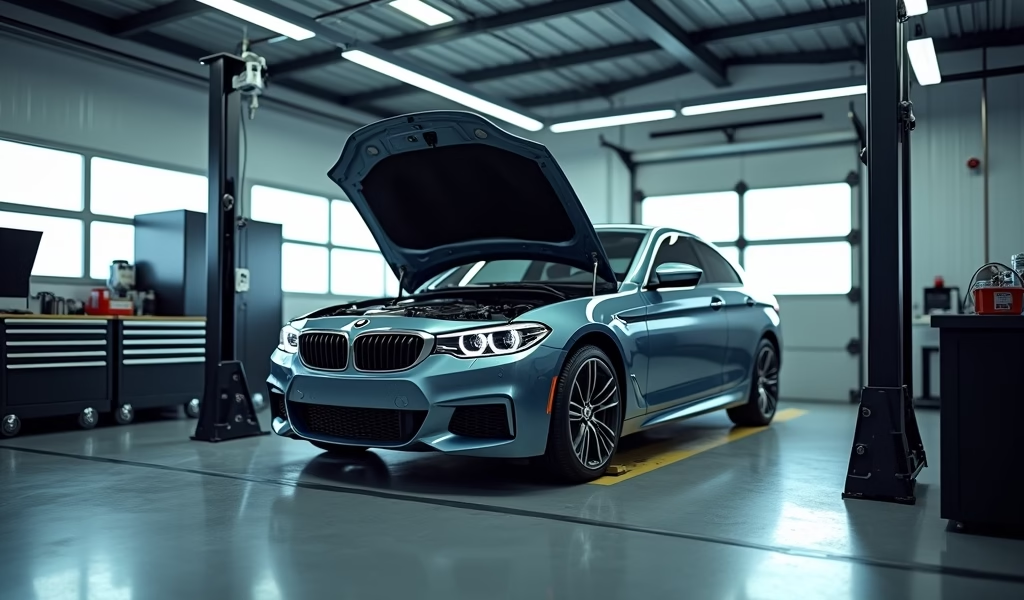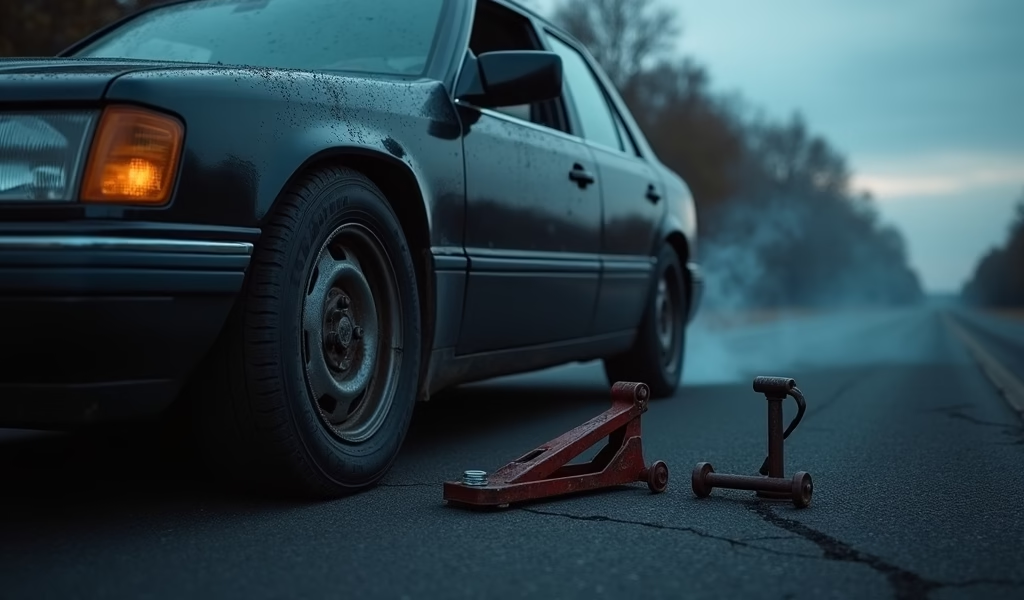Overview
This article outlines seven essential car maintenance practices: regular oil changes, tire maintenance, brake system checks, battery care, fluid level monitoring, filter replacements, and belt/hose inspections. The author emphasizes that consistent preventative maintenance saves money, extends vehicle life, and ensures safety, regardless of the vehicle’s age or model.
Table of Contents
- Introduction
- Regular Oil Changes: Your Engine’s Lifeblood
- Tire Maintenance: Where Rubber Meets Road
- Brake System: When Stopping Matters Most
- Battery Maintenance: Your Car’s Powerhouse
- Fluid Level Checks: The Hidden Heroes
- Filter Replacements: Your Car’s Breathing System
- Belt and Hose Inspections: The Silent Workhorses
- Conclusion
- Frequently Asked Questions
Introduction
Every car on the road deserves proper care, regardless of make, model, or age. After 20 years turning wrenches and diagnosing issues under the hood, I’ve seen firsthand how routine maintenance prevents costly repairs and extends vehicle life.
Think of your car like your body – regular checkups catch small issues before they become serious problems. Just as you wouldn’t skip doctor visits, your vehicle needs consistent attention to stay in peak condition.
The good news? Many essential maintenance tasks are straightforward enough that you can handle them yourself or at least understand what your mechanic is doing. Let’s dive into the seven maintenance musts for every car on the road today.
Following a proper car maintenance schedule isn’t just about avoiding breakdowns – it’s about safety, reliability, and protecting your investment. These seven tips form the foundation of responsible car ownership, whether you drive a brand-new luxury vehicle or a beloved older model.
Regular Oil Changes: Your Engine’s Lifeblood

If your car’s engine is its heart, then oil is definitely its blood. Clean oil lubricates, cools, and cleans your engine components, preventing friction and removing harmful particles that would otherwise cause premature wear.
The old “every 3,000 miles” rule no longer applies universally. Modern engines and synthetic oils have changed the game. Most newer vehicles can go 5,000-10,000 miles between changes, depending on driving conditions and oil type. Always check your owner’s manual for the manufacturer’s recommendation – they engineered your vehicle and know what it needs.
How do you know when it’s time? Watch for these warning signs:
- Oil appears dark and gritty on the dipstick
- Engine running louder than usual
- Oil pressure warning light illuminates
- Exhaust smoke
- Declining fuel efficiency
Changing your oil yourself is satisfying and saves money, but there’s value in professional service too. When I change a customer’s oil, I’m also inspecting many other components, spotting developing issues they might miss. If you’re DIY-minded, just remember to dispose of used oil properly – it’s toxic to the environment and illegal to dump.
According to AAA’s automotive experts, following manufacturer recommendations on oil changes can extend engine life by years while improving performance and efficiency. That’s a small investment with big returns.
Tire Maintenance: Where Rubber Meets Road
Your tires are literally where the rubber meets the road – the only parts of your car actually touching the pavement. Proper tire maintenance directly affects handling, braking distance, fuel economy, and most importantly, your safety.
Start with correct tire pressure. I check mine monthly, and always before long trips. Underinflated tires flex more, generating heat and causing premature wear along the edges. Overinflation creates a harsh ride and causes center tread wear. Your recommended pressure is listed in your owner’s manual or on the driver’s doorjamb sticker – not on the tire sidewall (that’s the maximum pressure, not the recommended one).
Rotation is equally important. Front and rear tires wear differently due to steering forces and weight distribution. Most vehicles need rotation every 5,000-7,000 miles. This simple service extends tire life significantly, potentially saving hundreds of dollars over time.
Don’t forget to check your tread depth regularly. The classic penny test works well: insert a penny into your tread with Lincoln’s head upside down. If you can see all of his head, your tread depth is below 2/32 inch and it’s time for new tires.
Alignment and balance matter too. If your car pulls to one side or vibrates at certain speeds, have these checked professionally. Proper alignment prevents uneven wear and improves fuel economy by reducing rolling resistance.
Knowing what your car’s maintenance schedule calls for regarding tire service can prevent blowouts and ensure you’re getting the maximum life from your tires.
Brake System: When Stopping Matters Most
When it comes to safety systems in your vehicle, nothing is more critical than your brakes. They transform kinetic energy into heat through friction, bringing thousands of pounds of metal to a controlled stop. As a mechanic, I’ve seen too many close calls from neglected brake systems.
Listen to what your car is telling you. These warning signs demand immediate attention:
- Squealing, grinding, or metal-on-metal sounds
- Brake pedal feels soft or sinks to the floor
- Vehicle pulls to one side during braking
- Vibration or pulsation when braking
- Brake warning light illuminated
- Increased stopping distance
Most vehicles need a thorough brake inspection annually or every 12,000 miles – sooner if you drive in mountainous areas or heavy traffic. A complete inspection should examine brake pads or shoes, rotors or drums, calipers, brake lines, fluid condition, and the master cylinder.
Brake fluid is often overlooked but critically important. It’s hygroscopic, meaning it absorbs moisture from the air over time. This contaminated fluid can cause internal corrosion and brake failure. Most manufacturers recommend changing brake fluid every two years regardless of mileage.
The National Highway Traffic Safety Administration identifies brake system failures among the leading causes of preventable accidents. Regular inspections and maintenance aren’t just about saving money – they’re about saving lives.
Battery Maintenance: Your Car’s Powerhouse
Nothing ruins your day faster than turning the key only to hear that disappointing click of a dead battery. The average car battery lasts 3-5 years, but proper maintenance can extend that considerably.
Temperature extremes are battery killers. Hot summers accelerate internal corrosion, while cold winters reduce a battery’s ability to deliver current. If you live somewhere with seasonal extremes, be especially vigilant during weather transitions.
Check your battery terminals regularly for corrosion – that white or greenish powdery substance that restricts electrical flow. Cleaning terminals is simple: disconnect the battery (always negative terminal first), scrub with a solution of baking soda and water using an old toothbrush, rinse with clean water, dry thoroughly, and apply a thin coat of petroleum jelly to prevent future buildup.
Testing voltage is easy with a multimeter. A healthy battery should read about 12.6 volts when the engine is off and between 13.7-14.7 volts when running. If you don’t have testing equipment, most auto parts stores offer free battery testing.
Modern vehicles have numerous systems that draw power even when parked – keyless entry receivers, security systems, and computer modules. If you won’t be driving for several weeks, consider using a battery tender to maintain charge, especially in older vehicles.
Fluid Level Checks: The Hidden Heroes

Your car relies on several vital fluids beyond just engine oil. Each plays a crucial role in keeping systems functioning properly, and checking them regularly can prevent expensive failures.
Transmission fluid lubricates and cools your transmission’s moving parts. In automatic transmissions, healthy fluid is typically reddish and smells slightly sweet. Dark, burnt-smelling fluid indicates internal problems. While some newer vehicles claim “lifetime” transmission fluid, I’ve rebuilt enough transmissions to recommend changes every 30,000-60,000 miles for most vehicles.
Coolant (antifreeze) prevents freezing in winter and boiling in summer while transferring heat away from your engine. Check the reservoir level when the engine is cold, and ensure the mixture is appropriate for your climate. Most vehicles need a coolant flush every 2-3 years or 30,000 miles as the corrosion inhibitors break down over time.
Brake fluid transfers force from your foot to the brake mechanism. Because it’s hygroscopic (absorbs moisture), it should be changed every 2 years regardless of mileage. Contaminated brake fluid can cause internal corrosion and compromised braking performance.
Power steering fluid makes turning your steering wheel effortless. Low levels cause steering difficulty and pump damage. If you notice the steering becoming harder, check the reservoir and look for leaks.
Finding a puddle under your car? Color provides clues:
- Red or pink: Transmission or power steering fluid
- Green or orange: Coolant
- Clear to amber: Brake fluid
- Dark brown: Engine oil
A comprehensive car maintenance scheduling approach should include checking all these fluids regularly, as they’re relatively inexpensive to maintain but costly to repair if neglected.
Filter Replacements: Your Car’s Breathing System
Just as we need clean air to breathe, your car relies on clean air, fuel, and oil to function optimally. Various filters keep contaminants at bay, and replacing them regularly is simple preventative maintenance with big benefits.
Your engine air filter prevents dust, dirt, and debris from entering the engine. A clogged filter restricts airflow, reducing power and fuel economy. Most need replacement every 15,000-30,000 miles, but dusty conditions might require more frequent changes. Checking is easy – most air boxes open with simple clips, no tools required.
The cabin air filter often goes forgotten until you notice musty smells or poor airflow from your vents. It traps pollen, dust, and other airborne particles before they enter your passenger compartment. Most should be replaced every 15,000-25,000 miles or annually if you drive on dusty roads or have allergies.
Fuel filters prevent contaminants from reaching your engine’s fuel injectors or carburetor. A clogged fuel filter causes hesitation, hard starting, and even stalling. Replacement intervals vary widely – from 30,000 to 100,000 miles depending on your vehicle and fuel quality.
Many filter replacements are easy DIY tasks. For instance, changing an air filter typically requires no tools and takes just minutes. If you’re comfortable doing basic maintenance, filters are a great place to start saving on service costs.
The U.S. Department of Energy estimates that replacing a clogged air filter can improve fuel economy by up to 10% in older vehicles with carbureted engines – savings that quickly recover the cost of the filter.
Belt and Hose Inspections: The Silent Workhorses
Belts and hoses are the unsung heroes of your engine bay – rarely noticed until they fail catastrophically, usually at the most inconvenient time and place. These rubber components degrade gradually from heat, oil exposure, and age.
Most modern cars use a single serpentine belt that drives multiple accessories – alternator, power steering pump, A/C compressor, and water pump in many vehicles. Inspect it regularly for cracks, fraying, glazing (shiny, hardened surfaces), or missing chunks. Most serpentine belts should be inspected every 25,000 miles and replaced every 50,000-100,000 miles.
Hoses carry vital fluids throughout your engine. Radiator and heater hoses should be checked for:
- Softness or sponginess when squeezed
- Hardening, cracking, or brittleness
- Swelling or bulging, especially near connections
- Leaks or seepage around clamps
Most cooling system hoses should be replaced preventatively every four years or 60,000 miles, whichever comes first. The cost of replacement is minimal compared to the potential damage from a burst hose, which can cause overheating and extensive engine damage in minutes.
When inspecting belts and hoses, it’s important to check them both cold and after the engine has reached operating temperature. Some leaks only appear under pressure when the system is hot, while cracks may be more visible in cold rubber.
Conclusion
Taking care of every car in your life doesn’t require mechanical expertise or expensive equipment – just attention and consistency. These seven maintenance fundamentals form the backbone of vehicle care that will keep you on the road and out of the repair shop.
The most important tool in your maintenance arsenal is vigilance. Pay attention to how your car looks, sounds, and feels. Changes often signal developing issues that, caught early, can be addressed before becoming expensive repairs.
Create a simple maintenance calendar based on your vehicle’s specific needs. Your owner’s manual provides a recommended schedule, but you may need to adjust based on your driving habits and conditions. Digital reminder apps make tracking maintenance easier than ever.
Remember that preventative maintenance is always less expensive than reactive repairs. The small investments of time and money in these seven areas pay enormous dividends in vehicle reliability, safety, and longevity – not to mention your peace of mind.
Your car takes care of you every day – return the favor with consistent, quality maintenance. Your wallet (and future self) will thank you.
Frequently Asked Questions
How often should I change my oil?
Follow your owner’s manual recommendations, typically 5,000-10,000 miles for most modern vehicles using synthetic oil. Severe driving conditions (extreme temperatures, towing, lots of short trips) may require more frequent changes.
What’s the most overlooked car maintenance item?
Brake fluid changes are frequently overlooked but critically important. Most manufacturers recommend replacing brake fluid every 2 years regardless of mileage due to moisture absorption.
How do I know when I need new tires?
Use the penny test by inserting a penny into the tread with Lincoln’s head upside down – if you can see all of his head, you need new tires. Also look for uneven wear, cracks, bulges, or vibrations while driving.
Can I skip scheduled maintenance if I don’t drive much?
Time-based maintenance is still necessary even with low mileage. Fluids degrade, rubber components dry out, and batteries discharge regardless of how much you drive.
What’s the single most important maintenance tip for extending car life?
Regular oil changes are the single most effective way to extend engine life and prevent major repairs. Clean oil properly lubricates engine components and removes harmful contaminants.


Pingback: New Car 2021: 5 Proven Maintenance Tips - knowsyourcar.com